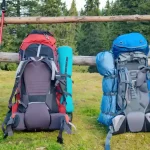
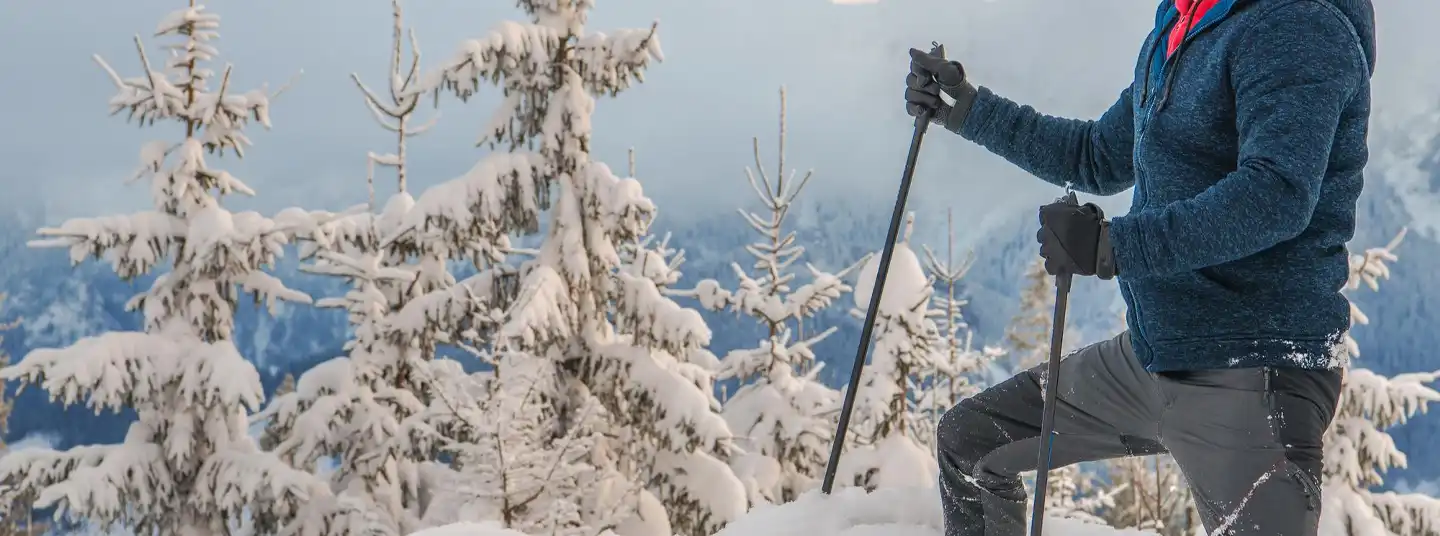
Stay Warm with Top Winter Camping Pants and Bottom Layers
by
Emily Wychwood
Are you ready to elevate your winter camping experience with optimal comfort and warmth? Look no further – we have you covered with our guide to the best winter camping pants and bottom layers.
When winter camping, layering your clothing is key to staying warm and comfortable. The three main layers to consider are the base layer, middle layer, and outer layer. The base layer is the underwear layer that wicks sweat away from the skin. The middle layer is the insulating layer that helps retain body heat. The outer layer is the shell layer that protects against wind and rain. When layering for cold weather, it’s important to consider factors like exertion level and personal metabolism.
Some examples of layering for different weather conditions include wearing midweight polyester long underwear, a jacket with synthetic insulation, midweight fleece pants, and a waterproof/breathable rain jacket and pants for cold weather; wearing lightweight polyester long underwear, a lightweight fleece jacket, synthetic hiking pants, and a lightweight waterproof/breathable rain jacket and pants for rainy weather; and wearing polyester briefs, a short-sleeve synthetic tee, convertible nylon hiking pants, and a lightweight wind jacket for hot weather.
The base layer should be moisture-wicking and can be made of synthetic fabrics like polyester and nylon, or natural fibers like merino wool and silk. The weight of the base layer can be lightweight, midweight, or heavyweight. The middle layer can be made of materials like polyester fleece, down insulation, or synthetic insulation. The outer layer should provide protection from wind and rain and can be waterproof/breathable, water-resistant/breathable, or a soft shell. When layering, it’s important to adjust layers as conditions change and to choose options that make sense for the activity and budget.
Key Takeaways:
- Layering your clothing is essential for staying warm during winter camping.
- The three main layers to consider are the base layer, middle layer, and outer layer.
- The base layer wicks sweat away from the skin and can be made of synthetic fabrics or natural fibers.
- The weight of the base layer should be chosen based on weather conditions and personal preferences.
- The middle layer provides insulation and can be made of materials like polyester fleece, down insulation, or synthetic insulation.
Layering for Winter Camping: The Basics
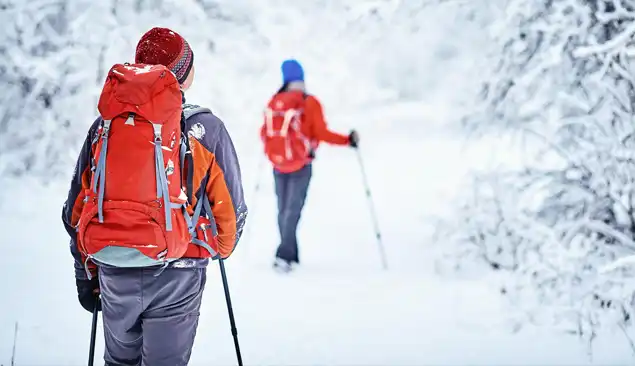
When it comes to winter camping, layering your clothing is key to staying warm and comfortable. Let’s dive into the basics of layering and explore each layer in detail.
The Base Layer
The base layer is the first layer you put on and it’s responsible for wicking sweat away from your skin. It’s important that the fabric is moisture-wicking to keep you dry and prevent you from getting chilled. There are two main choices for base layer materials: synthetic fabrics like polyester and nylon, or natural fibers like merino wool and silk.
The Middle Layer
The middle layer provides insulation and helps retain body heat. Common materials for this layer include polyester fleece, down insulation, and synthetic insulation. The choice of middle layer will depend on the expected temperature and personal preference. Polyester fleece is a popular option as it provides warmth, breathability, and quick-drying properties.
The Outer Layer
The outer layer acts as a shell layer and protects against wind and rain. Options for the outer layer include waterproof/breathable materials, water-resistant/breathable materials, and soft shells. Waterproof/breathable fabrics like Gore-Tex are excellent for keeping you dry in wet conditions. Soft shells, on the other hand, are ideal for milder weather as they offer wind resistance and water repellency.
When layering for cold weather, it’s important to consider factors like exertion level and personal metabolism. Adjusting your layers as conditions change is also crucial. For example, during high exertion activities, you may need to remove a layer to prevent overheating. On the other hand, when you’re stationary or in very cold conditions, you may need to add an extra layer for insulation.
Remember to choose layers that make sense for your activity and budget. Investing in quality winter camping pants and bottom layers will enhance your overall experience. Whether you’re hiking, snowshoeing, or simply enjoying the winter scenery, proper layering will ensure you stay warm and comfortable throughout your adventure.
| Layer | Materials |
|---|---|
| Base Layer | Synthetic fabrics (polyester, nylon) Natural fibers (merino wool, silk) |
| Middle Layer | Polyester fleece Down insulation Synthetic insulation |
| Outer Layer | Waterproof/breathable materials Water-resistant/breathable materials Soft shells |
Base Layers: Wicking Away Sweat
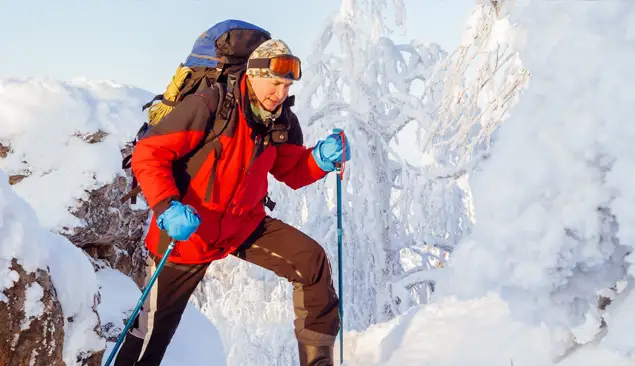
The base layer is your first line of defense against moisture build-up and should be moisture-wicking to keep you dry and comfortable. Let’s explore the different base layer materials available for winter camping pants and bottom layers.
When it comes to base layers, there are a variety of materials to choose from. Synthetic fabrics like polyester and nylon are popular options due to their excellent moisture-wicking properties. These materials are designed to pull moisture away from your skin and onto the surface of the fabric, where it can evaporate quickly. This helps to regulate your body temperature and keep you dry, even during intense physical activity.
Another natural fiber option for base layers is merino wool. Merino wool is known for its ability to wick away moisture while also providing excellent insulation. It has the added benefit of being odor-resistant, making it a great choice for multi-day winter camping trips. Silk is also a natural fiber that can be used as a base layer. It is lightweight, breathable, and has good moisture-wicking properties, although it may not provide as much insulation as synthetic fabrics or merino wool.
When choosing a base layer, consider the weather conditions you’ll be facing and your own personal preferences. A lightweight base layer is suitable for mild temperatures or high-intensity activities, while a midweight or heavyweight base layer is better suited for colder temperatures or less strenuous activities. Remember to always dress in layers and adjust accordingly as conditions change. By choosing the right base layer, you can stay dry and comfortable throughout your winter camping adventures.
Choosing the Right Weight: Lightweight, Midweight, or Heavyweight
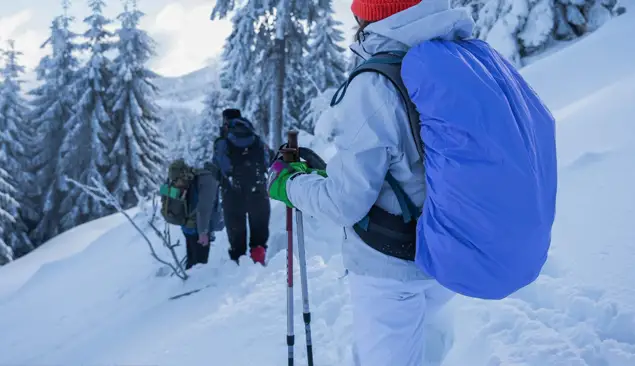
When selecting base layers for your winter camping pants and bottom layers, it’s crucial to choose the right weight to suit your needs. Let’s take a closer look at the differences between lightweight, midweight, and heavyweight base layers.
Lightweight base layers are ideal for high-exertion activities or milder weather conditions. They are designed to provide a thin layer of insulation and moisture-wicking properties without adding unnecessary bulk. These base layers are perfect for those who tend to generate more heat or engage in activities that keep them consistently active. They are usually made of synthetic materials like polyester and nylon, which are quick-drying and breathable, keeping you comfortable throughout your winter camping adventures.
In contrast, midweight base layers offer a balance between insulation and breathability, making them suitable for a wide range of temperatures and activities. They provide a moderate amount of warmth and moisture-wicking properties, making them versatile and efficient. Midweight base layers are often made of materials like merino wool or a blend of synthetic fibers and natural fibers, providing natural insulation and odor-resistance while maintaining durability and comfort.
For extremely cold weather or low activity levels, heavyweight base layers are your best bet. These layers provide exceptional warmth and insulation by trapping heat close to your body. They are designed for prolonged exposure to freezing temperatures and provide the highest level of comfort and protection against the cold. Heavyweight base layers are typically made of thick and insulating materials like merino wool or synthetic fibers, ensuring maximum heat retention and moisture management.
Choosing the Right Weight: A Comparison Table
| Weight | Activity Level | Temperature Range | Material |
|---|---|---|---|
| Lightweight | High-exertion activities, mild weather | Above freezing | Synthetic fabrics like polyester and nylon |
| Midweight | Moderate activity levels, fluctuating temperatures | Freezing to cool | Materials like merino wool or synthetic blends |
| Heavyweight | Low activity levels, extremely cold weather | Sub-freezing | Thick and insulating materials like merino wool or synthetic fibers |
Remember, the choice of base layer weight ultimately depends on your personal preference, specific activity level, and the weather conditions you anticipate. It’s important to consider factors such as the duration of your outdoor activities, your own metabolism, and the level of insulation provided by your other layers. By carefully selecting the right weight for your base layers, you’ll ensure maximum comfort and warmth during your winter camping adventures.
Insulating with Middle Layers

The middle layer is where the magic happens – it keeps you warm and cozy during chilly winter camping adventures. Let’s explore some popular middle layer materials for winter camping pants and bottom layers.
Polyester Fleece: Polyester fleece is a versatile and affordable option for a middle layer. It provides excellent insulation, trapping heat close to your body while still allowing breathability. The soft and lightweight fabric helps to retain warmth and wick away moisture, keeping you dry and comfortable during your outdoor activities.
Down Insulation: Down is a popular choice for its exceptional warmth-to-weight ratio. The natural insulation of down traps heat and creates a layer of warmth around your body. It is highly compressible, making it ideal for packing into tight spaces. However, it’s important to note that down loses its insulating properties when wet, so be sure to pair it with a waterproof outer layer in rainy or snowy conditions.
Synthetic Insulation: Synthetic insulation is a reliable and practical alternative to down. Made of synthetic fibers, this insulating material retains warmth even when wet, making it a great option for winter camping. Synthetic insulation is also known for its quick-drying capabilities, ensuring that you stay comfortable throughout your outdoor adventures.
| Material | Pros | Cons |
|---|---|---|
| Polyester Fleece | – Versatile and affordable – Excellent insulation – Lightweight and breathable | – Not as warm when wet compared to other options |
| Down Insulation | – Exceptional warmth-to-weight ratio – Highly compressible – Luxuriously soft and cozy | – Loses insulation properties when wet – Requires special care and maintenance |
| Synthetic Insulation | – Retains warmth even when wet – Quick-drying – Durable and easy to care for | – May not provide the same level of warmth as down |
When choosing a middle layer for your winter camping pants and bottom layers, consider the weather conditions, your activity level, and personal preferences. Each material offers unique benefits, so you can find the perfect middle layer that suits your needs. Remember to layer appropriately and adjust as needed to stay comfortable during your winter adventures.
Protecting Against Wind and Rain: Outer Layers
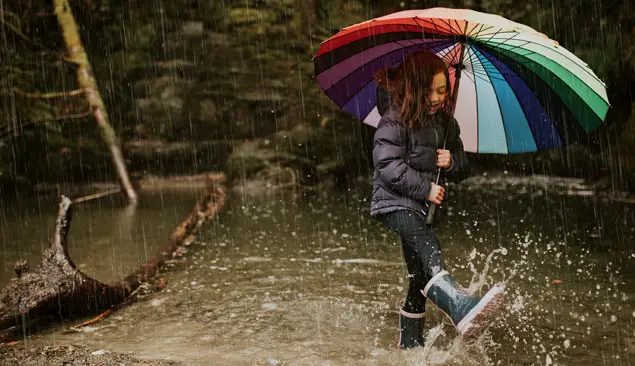
When braving the elements during winter camping, the outer layer is your shield against wind and rain. Let’s explore the different types of outer layers suitable for winter camping pants and bottom layers.
One option for the outer layer is a windproof shell, which is designed to block the chilling effects of wind while still providing breathability. These shells are typically made of lightweight materials that allow air to circulate, preventing overheating during activity. Another option is a waterproof/breathable shell, which offers protection from both wind and rain. These shells are constructed with a special membrane that repels water while allowing moisture from sweat to escape, keeping you dry and comfortable. If you’re expecting light rain or snow, a water-resistant/breathable shell may be sufficient. These shells are treated with a water-repellent coating that sheds moisture, but they may not provide the same level of protection as a fully waterproof shell.
A third option is a soft shell, which combines the qualities of a windproof shell and a waterproof/breathable shell. Soft shells are made from flexible and stretchy materials that offer both weather resistance and breathability. They are ideal for high-intensity activities where freedom of movement is important.
| Outer Layer Type | Features |
|---|---|
| Windproof Shell | Blocks wind, lightweight, breathable |
| Waterproof/Breathable Shell | Blocks wind and rain, moisture-wicking, keeps you dry |
| Water-Resistant/Breathable Shell | Repels moisture, breathable, suitable for light rain or snow |
| Soft Shell | Weather resistant, breathable, flexible and stretchy |
When choosing an outer layer, consider the weather conditions you will be facing and the level of activity you will be engaging in. For colder and wetter conditions, a combination of a waterproof/breathable shell and a layer of synthetic insulation may be necessary. On the other hand, for milder temperatures and higher activity levels, a windproof shell or a soft shell may be sufficient.
Remember, layering is not only about protection, but also about versatility. Being able to adjust your layers according to changing conditions and personal comfort is essential for a successful winter camping experience. So choose the outer layers that best suit your needs and enjoy the great outdoors with confidence.
Layering Examples for Different Weather Conditions
Wondering how to layer your winter camping pants and bottom layers for various weather conditions? We’ve got you covered with some practical examples for cold weather, rainy weather, and even hot weather adventures. When it comes to staying warm and comfortable during your winter camping trips, the right layering system can make all the difference.
Cold Weather
For cold weather, it’s important to choose layers that provide insulation and protection against the elements. Start with a midweight polyester long underwear as your base layer to wick away moisture from your skin. Layer a jacket with synthetic insulation over the base layer to retain body heat. Pair this with midweight fleece pants for extra warmth. Finally, top it off with a waterproof/breathable rain jacket and pants to shield you from wind and rain.
Rainy Weather
When braving rainy weather, select layers that will keep you dry and comfortable. Wear lightweight polyester long underwear as your base layer. Layer a lightweight fleece jacket on top for insulation. Opt for synthetic hiking pants that dry quickly in wet conditions. Complete your outfit with a lightweight waterproof/breathable rain jacket and pants that will keep you dry while allowing moisture to escape.
Hot Weather
When venturing out in hot weather, focus on layers that offer breathability and protection from the sun. Your base layer can be as simple as polyester briefs and a short-sleeve synthetic tee to wick away sweat. Choose convertible nylon hiking pants that can convert to shorts for added flexibility. Finally, don’t forget a lightweight wind jacket to protect against chilly breezes and unexpected changes in weather.
Remember, layering is all about adjusting to changing conditions and personal preferences. Consider your activity level and budget when selecting your winter camping pants and bottom layers. With the right layering system, you’ll be ready for any weather that comes your way, ensuring a comfortable and enjoyable winter camping experience.
| Weather Condition | Base Layer | Middle Layer | Bottom Layer | Outer Layer |
|---|---|---|---|---|
| Cold Weather | Midweight polyester long underwear | Jacket with synthetic insulation | Midweight fleece pants | Waterproof/breathable rain jacket and pants |
| Rainy Weather | Lightweight polyester long underwear | Lightweight fleece jacket | Synthetic hiking pants | Lightweight waterproof/breathable rain jacket and pants |
| Hot Weather | Polyester briefs, short-sleeve synthetic tee | N/A | Convertible nylon hiking pants | Lightweight wind jacket |
Adjusting Layers and Considering Activity and Budget
Layering is not a one-size-fits-all approach – it’s important to adjust your layers as conditions change and select options that align with your activity level and budget. Let’s dive into some tips for choosing the right winter camping pants and bottom layers.
When it comes to activity level, consider the intensity of your winter adventures. If you’re planning on engaging in high-energy activities like skiing or snowboarding, you may want to opt for lightweight, breathable fabrics that allow for maximum movement and ventilation. On the other hand, if you’re planning on taking it easy with leisurely hikes or campfire lounging, you can go for more insulated and cozy options.
Budget is another important factor to consider. While it’s tempting to splurge on top-of-the-line outdoor gear, it’s not always necessary. There are plenty of affordable options that offer excellent performance and durability. Look for brands that offer a range of price points and read reviews to ensure that you’re getting the best bang for your buck.
Finally, don’t forget to assess your personal preferences and needs. Some individuals naturally run warmer, while others tend to get cold easily. Take your metabolism into account and choose layers that will help regulate your body temperature accordingly. Additionally, consider any specific requirements you may have, such as the need for extra insulation in certain areas or the desire for quick-drying fabrics.
| Activity Level | Recommended Layers |
|---|---|
| High-energy activities | Lightweight, breathable fabrics |
| Leisurely hikes or campfire lounging | More insulated and cozy options |
Remember, winter camping is all about staying warm and comfortable while enjoying the great outdoors. By adjusting your layers to the conditions and considering your activity level and budget, you can ensure a pleasant and enjoyable camping experience. Happy camping!
Elevate Your Winter Camping Experience with Top Quality Gear
Ready to take your winter camping adventures to the next level? Investing in top-quality winter camping pants and bottom layers can make all the difference in keeping you warm, comfortable, and ready for whatever nature throws your way. When it comes to outdoor clothing and winter gear, it’s essential to choose options that are durable, functional, and designed specifically for cold weather conditions.
One of the most important pieces of gear for winter camping is a pair of reliable winter camping pants. Look for pants that are insulated, water-resistant, and have reinforced knees for added durability. Consider options with adjustable waistbands, multiple pockets, and zippered vents for temperature regulation. It’s also crucial to choose pants that provide a comfortable fit and freedom of movement, allowing you to tackle any terrain with ease.
In addition to winter camping pants, investing in quality bottom layers is equally important. A base layer that is moisture-wicking and breathable is essential for keeping you dry and comfortable throughout your winter adventures. Look for options made of synthetic fabrics like polyester and nylon, or natural fibers like merino wool and silk. The weight of the base layer should be chosen based on the weather conditions and your personal preferences.
| Weather Conditions | Recommended Base Layer Weight |
|---|---|
| Cold Weather | Heavyweight |
| Moderate Weather | Midweight |
| Mild Weather | Lightweight |
When it comes to outdoor clothing and winter gear, it’s important to choose options that suit your activity level and budget. Whether you’re embarking on a multi-day winter camping trip or enjoying a day hike in the snow, having the right gear can significantly enhance your experience. So gear up, stay warm, and embrace the beauty of winter with confidence!
Conclusion
With the right winter camping pants and bottom layers, you can confidently embrace the great outdoors during the colder months. Stay warm, stay comfortable, and make the most of your winter adventures!
When winter camping, layering your clothing is key to staying warm and comfortable. The three main layers to consider are the base layer, middle layer, and outer layer. The base layer, which is the underwear layer, wicks sweat away from the skin, keeping you dry and preventing chills.
For the base layer, you have a range of options. Moisture-wicking materials like synthetic fabrics such as polyester and nylon are popular choices. Natural fibers like merino wool and silk also offer excellent moisture-wicking properties and provide added insulation.
The weight of the base layer is another important consideration. You can choose from lightweight, midweight, or heavyweight options depending on the weather conditions and your personal preferences. Remember to adjust your layers as needed throughout the day, especially when engaging in activities that generate more body heat.
The middle layer is responsible for providing insulation and retaining body heat. Popular choices include polyester fleece, down insulation, and synthetic insulation. These materials provide much-needed warmth without adding bulk or restricting movement.
The outer layer acts as a shell layer, protecting you against wind and rain. Options can include waterproof/breathable, water-resistant/breathable, or soft shell materials. Consider the weather conditions and the intensity of your activities when choosing the appropriate outer layer.
Remember, layering is not a one-size-fits-all approach. Your activity level and personal metabolism play a significant role in determining the combination of layers that work best for you. Take the time to experiment and find what makes you the most comfortable during your winter camping adventures.
FAQ
A: The three main layers to consider when winter camping are the base layer, middle layer, and outer layer.
A: The base layer is the underwear layer that wicks sweat away from the skin, keeping you dry and comfortable.
A: The base layer can be made of synthetic fabrics like polyester and nylon, or natural fibers like merino wool and silk.
A: The middle layer can be made of materials like polyester fleece, down insulation, or synthetic insulation.
A: The middle layer can be made of materials like polyester fleece, down insulation, or synthetic insulation.
A: The outer layer is the shell layer that protects against wind and rain. It provides essential protection and keeps you dry and comfortable.
A: When choosing the weight of the base layer, consider factors like weather conditions and personal preferences.
A: Examples of layering for different weather conditions include wearing midweight polyester long underwear, a jacket with synthetic insulation, midweight fleece pants, and a waterproof/breathable rain jacket and pants for cold weather.
A: It’s important to adjust layers as conditions change to maintain warmth and comfort. Add or remove layers as needed.
A: When choosing winter camping pants and bottom layers, consider factors like activity level and budget. Invest in top-quality gear for the best experience.
Author

Emily Wychwood
Emily is an avid camper and outdoors enthusiast, with a passion for exploring new places and trying out new gear. She grew up camping with her family and has continued the tradition with her own children, who love nothing more than roasting marshmallows around the campfire.
Recent Posts


